Inner Knowing
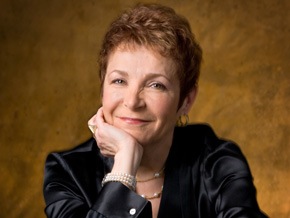
“We have a theology in our biology. It is instinctual, just as birds know their paths, beavers build dams, and whales communicate with one another. We are born with knowledge of natural laws, through which the divine reveals or animates its presence in our bones, blood, tissues – our cellular beings.”
–Caroline Myss (American Medical Intuitive, Mystic and Author, 1952-)
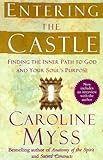
“Entering the Castle: Finding the Inner Path to God and Your Soul’s Purpose” (Caroline Myss)
The Science of the Future
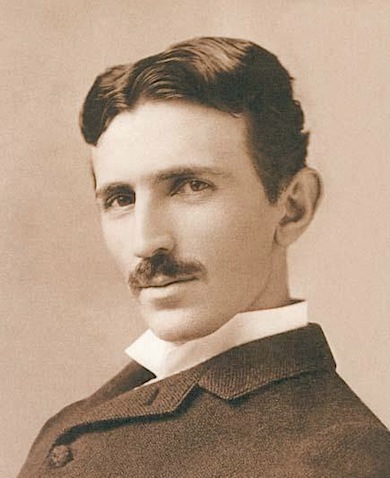
“On the day when science begins to investigate non-physical phenomena, it will make greater progress in a decade than in all the centuries it has existed.”
–Nikola Tesla (Serbian-born American Inventor, 1856-1943)
Intelligent Atoms
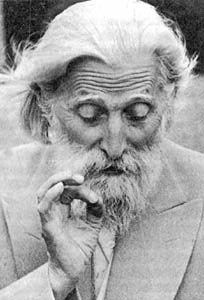
“The more advanced the evolution of a certain form [of life] is, the more intelligent the atoms comprising it. In order to reach a higher stage of development, the atom has to pass through the four Kingdoms – the mineral kingdom, the plant kingdom, the animal kingdom and the kingdom of human beings. …The more stable the atoms of given elements in the human organism are, the better characteristics they convey to human character.”
–Peter Konstantinov Deunov (a.k.a. Master Beinsa Douno, Bulgarian Spiritual Master and Founder of a School of Esoteric Christianity, 1864-1944)
Qi, Prana and Pneuma

I often hear people expressing concern over words like qi (chi), believing that it has something to do with primitive or pagan cultures. In actual fact qi is based upon observations by a culture that looked at the world very differently from that developed in the Western world. It is often mistranslated as “energy” which is not quite accurate.
Some experts now refer to the “subtle systems” of the body, and they appear to be of many types. In China these systems were thought to be the highways of the animating force of the body. In Japan it s known as ki, in India it is prana, the Greeks called it “Pneuma” or in the West were called the etheric or the fifth element, after earth, fire, air and water. There are at least 97 cultures around the world that have claimed the existence of some form of “energy.” We use the term subtle “systems”, to be a little more precise than saying “energies”, for these subtle systems are composed of the inseparable twins:
1. Subtle energies and
2. The subtle fields that carry them.
Without energy, the fields could not actualize, and without the fields, there would be nothing to carry the energy.
Let’s look at something else.
I have been interested to see whether these different concepts map onto each other. I just found an interesting discussion here, that adds some interesting material, all of which I have been able to confirm.
According to my dictionary the word prana does indeed come from the root “Ãpraa” that expresses the idea of “breathing” or “blowing of the wind.” Prana means “breath” and also “life” and “living being”. In Genesis God formed us out of dust from the soil, He blew into his nostrils the breath of life and the human became a living being.
Jung is one of the people who said that the Indian prana corresponds to the Greek pneuma. Pneuma means “air in motion” as in breath and wind, and it is connected with the idea of life. There is a further correlation: prana is related to the mind and rendered as “spirit,” and pneuma has the same meaning.
The trouble with qi has arisen because the Chinese have never had any interest in discussing the meaning of a concept. So they do not speculate on the nature of qi, but instead perceive it functionally: by what it does. Qi, chi, ki has a similar meaning to prana and pneuma: it is translated as breath, vapor, and energy.
This is different from the New Age idea that everything “has” prana or qi. Only living beings do.
“Jesus answered and said unto him,
Verily, verily I say unto thee, except a man born be born again,
He cannot see the Kingdom of God.
Nicodemus saith unto him,
How can a man be born again when he is old?
Can he enter the second time into his mother’s womb, and be born?
Jesus answered: Verily, verily, I say unto thee,
Except a man born of water and the Spirit,
He cannot enter into the Kingdom of God.
That which is born of flesh is flesh and that which is born of Spirit is spirit,
Marvel not that I said unto thee: Ye must be born again.
The wind bloweth where it listeth, and thou hearest the sound thereof,
But cannot tell whence it comes and where it goeth:
So is every one that is born of the Spirit.”
The Bible John 3:3-8
“The term “Spirit” translates the Hebrew word ruah (Rûach), which, in its primary sense, means breath, air, wind. Jesus indeed uses the sensory image of the wind to suggest to Nicodemus the transcendent newness of him who is personally God’s breath, the divine Spirit.”
J. Cardinal Ratzinger, Catechism of the Catholic Church 1994
T’ai Chi Chih and the Sympathetic Nervous System
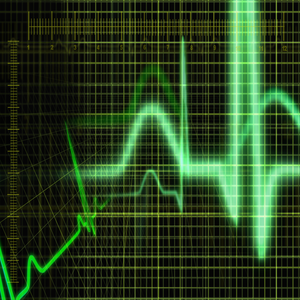
One of the problems about getting older is that the activity of the sympathetic nervous system may increase, bringing with it an increased risk of metabolic problems such as insulin resistance, hypertension and cardiovascular disease.
The sympathetic nervous system is a branch of the autonomic nervous system. It is always active at a basal level, which is called sympathetic tone. It becomes more active during times of stress. Its actions during the stress response comprise the classical fight-or-flight response.
There is a very interesting study from the Norman Cousins Center for Psychoneuroimmunology at the UCLA Semel Institute for Neuroscience & Human Behavior in Los Angeles.
There were 32 people in the study aged 60 or over. There were 19 people who were T’ai Chi Chih (TCC) practitioners and 13 who were not. The practitioners had completed a 25-week training in TCC the 13 others just had health education classes. T’ai Chi Chih is a simplified type of T’ai Chi that emphasizes the development of qi, a.k.a. chi.
TCC practitioners performed the breathing and movements for 20 minutes, while HE participants passively rested for the same time. Investigators measured various cardiovascular parameters before and after the task. A subsample of participants returned for a second evaluation and performed videotape-guided stretching for 20 minutes to evaluate the cardiovascular effects of slow-moving physical activity. TCC performance was found to significantly decrease sympathetic nervous system activity as measured by cardiac pre-ejection, blood pressure and heart rate. In contrast, there was no change in sympathetic activity following passive rest or slow-moving physical activity.
This shows us that there is something different about T’ai Chi. Practicing it leads to a decrease in activity of the sympathetic nervous system to levels that are not achieved by performing comparable physical activity alone.
Non-pharmacological and Lifestyle Approaches to Attention-Deficit/Hyperactivity Disorder: 11. Integrated Medicine

The whole point of Integrated Medicine and Integrated Health is to help the person with attention-deficit hyperactivity disorder (ADHD) to become integrated as a person by using an integrated approach to treatment. This kind of comprehensive approach is particularly important for many people with ADHD. I also want to re-emphasize that although ADHD is the approved term for the problem, many people, particularly adults, may have little overt evidence of hyperactivity, and they are better thought of as having “ADD.”
Attentional problems come in all shapes and sizes. Some are so mild that people just need to be shown how to use a day planner and implement some time management scheme. Others need a more aggressive and comprehensive approach. Whatever we do has to be individualized to the person with the problem. Not only do we have to match the plan with the person, we also need to match it with his or her belief system.
It is important to recognize that no one approach is likely to work on its own. Medications may be very helpful, but they are only tools to help people get organized so that they can fulfill their potential. And medications are unlikely to be effective unless we also deal with nutrition, posture, breathing, sleep and environmental stress.
It is also essential to realize that ADHD is highly co-morbid: there is evidence of increased rates of physical problems, including disturbances in thyroid function and cell membrane function throughout the body. The rates of conduct disorder, oppositional defiant disorder, learning disabilities, tics and Tourette’s, worry, anxiety and mood disorders are all much higher in people with ADHD. So high that until recently, many experts believed that ADHD was a symptom rather than a clearly delineated illness. This overlap is also one of the reasons why some people persist in saying that the diagnosis of ADHD is nothing more than a stigmatizing label for socially unacceptable behavior.
Physical
- Medications
- Nutrition
- Posture
- Exercise
- Environment
Over the last few weeks we have spent a lot of time looking at some of the options for treating the physical components of the problem. Now let us look at the rest.
Psychological
- Find out and work with a person’s interests. ADHD is highly dependent on context. A child or adult may have terrible problems with schoolwork, but be able to play a video game for hours on end
- There are multiple intelligences: uncover which are of the greatest importance. It is essential for a person to discover their strengths rather than being forced to focus on the weaknesses. Many people with ADHD find that highlighting text in a book can be useful, while others learn by doing
- People are more likely to follow instructions if they are interesting and emotionally charged
- Bear in mind that many people have poor self-esteem and others suffer from enormous feelings of regret. This is a particular issue for people who may have reached middle age before being diagnosed. We have seen countless people who feel that they have missed out on life. A man working in construction realized that he could have gone to college thirty years ago if only his ADHD had been diagnosed and treated
- Teach visualization skills
- Discover which times of the day are best in terms of attention and alertness
- Learn some simple relaxation techniques
- Learn problem-solving skills
Social
- ADHD can play havoc with relationships. If a child has it, there can be enormous stress on the parents and siblings, all of whom are at higher risk of some features of ADHD themselves. It is essential to help the family with coping skills. ADHD can also put a great deal of stress on a spouse or children. It is also important to know that many people with ADHD have sexual problems that stem from impatience, a low frustration threshold if they cannot have sex when they want it, and real problems with enjoying the moment and taking time to enjoy a romantic interlude. Some people also use sex as a form of self-medication. So it is essential to find out if there are sex or relationship problems and to deal with them, which may need outside help
- Many people with ADHD are socially awkward and may need to learn some social and communication skills
- ADHD and social awkwardness can be magnets for bullies, and it is remarkable how many young people with untreated or inadequately treated ADHD have been bullied. Occasionally they become the perpetrators of bullying to compensate for their difficulties. In either case it is important to discover and deal with bullying. It is one of several reasons why some experts have recommended enrolling a child in martial arts classes. Not only can they help with self-defense, but also the discipline of a martial arts class can work wonders for some people with ADHD
- Role models are important for people with ADHD. It is very helpful, particularly for young people to see that other sufferers have become extremely successful
- It is also important for parents and other family members to develop and maintain a positive image of the person with ADHD
- Develop positive yet realistic career and life goals
Subtle
- Poor breathing techniques can engender many problems. Learning to breath effectively can have profound physical effects as well as stimulating and balancing the subtle systems of the body
- As we have seen, although the research base is very small, yoga, t’ai chi ch’uan or qigong can all be very helpful
- Many people with ADHD are acutely sensitive to “atmosphere:” to the thoughts, feelings and attitudes of other people, and they need specific help to remain grounded and to protect their senses. Some of the flower essences can very helpful for that, as well as some other techniques that we shall be publishing shortly
Spiritual
- How can there be a spiritual component to ADHD? Some people find it difficult to engage in prayer or meditation because of problems with attention. However, with a little perseverance, we have evidence that some forms of meditation may actually help.
- Second the rituals of religion can sometimes provide a wonderful anchor for the person who is having a had time with ADHD.
- Another point is that ADHD is not all bad. Some people who have it become more attuned to nature, animals and to a mystical understanding of the world: an over-reliance on reasoning and linear learning can stifle those perceptions.
- Some people have suggested that ADHD may for the same reasons unlock a rich vein of creativity that might otherwise never have appeared.
There are plenty of books and websites that portray ADHD as a gift. While I have the greatest respect for this approach, it is still important for us not to forget the demonstrable problems caused by inadequately treated ADHD.
ADHD exists, it is treatable, and though it can bring many problems, it can also bring many opportunities. Just so long as we remember to respect every dimension of the person who has it, and remember that if we do not manage it, it will manage us.
Non-pharmacological and Lifestyle Approaches to Attention-Deficit/Hyperactivity Disorder: 10. Traditional Chinese Medicine

One of the problems when looking at research using traditional Chinese medicine (TCM) is that the Chinese medical system does not easily map onto the Western system of medicine. So while we might talk about attention-deficit hyperactivity disorder (ADHD), a Chinese medicine expert would be more interested in disturbances of qi, shen and jing in the whole person.
Most people who have done much acupuncture have seen people with attentional problems and tried to help them with acupuncture or acupressure. In traditional Chinese medicine, hyperactivity is thought to be the result of disturbance of the Shen (Mind or Spirit) that resides in the Heart. If the Shen is healthy then the mind and body of the child will be calm.
According to traditional Chinese medical pathology, there are three things that can disturb the Shen residing in the Heart:
- Heat
- Phlegm and/or
- Xu (Deficiency)
In the poetic language of the Chinese:
“If the Shen is not nourished sufficiently the child will not feel grounded and their Shen will flutter around nervously, like an agitated flame; this will be made worse if further Heat develops and rises, or if excessive Phlegm develops and obstructs the portals or orifices of the Heart to cause confusion and poor judgment.”
You see why Western doctors often have a hard time learning about Chinese medicine, and few ever comprehend its beauty and subtlety. And I say that after 26 years of acupuncture practice under my belt!
Despite the popularity of Chinese medicine, which includes acupuncture, herbs, nutrition and qigong, there are very few studies.
There have been some done in China, but often the structure of trials is different in China, where it is often considered unethical to withhold treatment, so studies rarely have a placebo arm.
A number of experts in Chinese medicine have written articles on their experience in treating ADHD.
Since there are so many people claiming success using Chinese medicine, there is an urgent need for controlled studies so that we can see how acupuncture and Chinese herbal medicine might fit in with other forms of treatment, and when to use what. As we have said when examining all the different forms of unorthodox medicine, we always have to balance the natural desire to do without medications against the havoc that can be caused by untreated or inadequately treated ADHD.
Having seen acupuncture and acupressure help some people with ADHD myself, I shall continue to monitor and report on any research reports that come out in the future.
Acupuncture and Acupressure for Morning Sickness

Although I am most definitely of the male persuasion, I know that morning sickness can be an awful problem, though there is some evidence that it is an attempt by the body to rid itself of toxins that could otherwise harm the baby.
I have had a longstanding interest in the use of acupuncture and acupressure for the treatment of nausea and vomiting, whether pregnancy related or caused by infections, anesthesia or chemotherapy. Over twenty years ago my committee at the Research Council for Complementary Medicine helped fund research on the topic at the University of Belfast, and I have used both acupuncture and acupressure to treat many hundreds of people with nausea and vomiting. Before I left England, we were planning to do a clinical trial of acupuncture on morning sickness at Queen Charlotte’s hospital in London.
So I was delighted to see a meta-analysis published in the journal Explore.
The authors identified 14 eligible trials that had been completed over the last sixteen years, involving a total of 1615 women who had been treated with either acupressure, acupuncture or electrical stimulation at acupuncture points.
The conclusions were that these methods may reduce nausea by more than 50% compared with controls and vomiting by around 40%. These figures look about right, though acupuncture and acupuncture are very “operator-dependent:” some therapists get better results than others. What was interesting was that the effect was all due to acupressure: acupuncture was not shown to be effective, but acupressure was.
The analysis also points out a potential weakness in other meta-analyses. It is not wise to lump all acupuncture and acupressure together, since each may work somewhat differently.
As a sidebar, when we use acupuncture or acupressure, we always tailor the treatment to the individual, but the most commonly used points are Liver-3 on the top of the foot between the big toe and second toe, and Pericardium-6, which lies on the inside of the forearm, about two inches above the wrist.
World T'ai Chi & Qigong Day

It seems incredible that a year has passed since I last wished everyone a Happy World T’ai Chi & Qigong Day, which falls this year on April 28th.
At 10 a.m. local time, wherever you are in the world, there will be what they describe as, “A global health and healing event that will be held in hundreds of cities in sixty nations. Free and open to the public these events welcome anyone interested in personal and global health and healing.”
The aim is to send a wave of positive healing “energy” around the world and draw attention to the benefits of T’ai Chi and Qigong.
You can visit can visit http://www.worldtaichiday.org to find events being held in your area that will be offering free teach-ins and exhibitions.
If you look on the left-hand side of the website under “Everyone’s Resources” you will find a great many extra resources, primarily related to T’ai Chi and Qigong and health, including a list of much of the research that has been done. It is just a list of papers and their summaries, but is a good place to start if you are not a specialist. There are also lists of places where you can learn T’ai Chi.
In my view, learning the basics of T’ai Chi and Qigong from a competent teacher is one of the best investments that you can ever make in yourself.
Now to that picture at the top of this article. It is not a hoax! You can find it at the Taichi Heartwork website.
I have had the privilege of studying T’ai Chi and Qigong with eight superb teachers on three continents. I learned a very great deal from each of them. The one who really resonated with me was Grandmaster John Kells, an Irishman who was a disciple and adopted son of Dr. Chi Chiang Tao.
John introduced more than 10,000 people to these arts, and many of them saw him demonstrate his internal force by throwing people without any physical contact. I have experienced it myself many times, and it is very real.
It is a by-product of personal development and a great deal more than a party trick. Very few of the Masters that I have known have developed themselves this far. If you get the chance to meet one, it can be life-changing.
For years now various scientists have claimed to have made machines that can generate this kind of force. So far I have not been convinced, despite having traveled to China, Russia and a dozen other countries to look at some of these gadgets.
If I find one that works, I shall let you know.
Until then, consider developing your own Qi. (It’s sometimes spelled Chi or Ki). Next Saturday may be just the excuse that you need!








